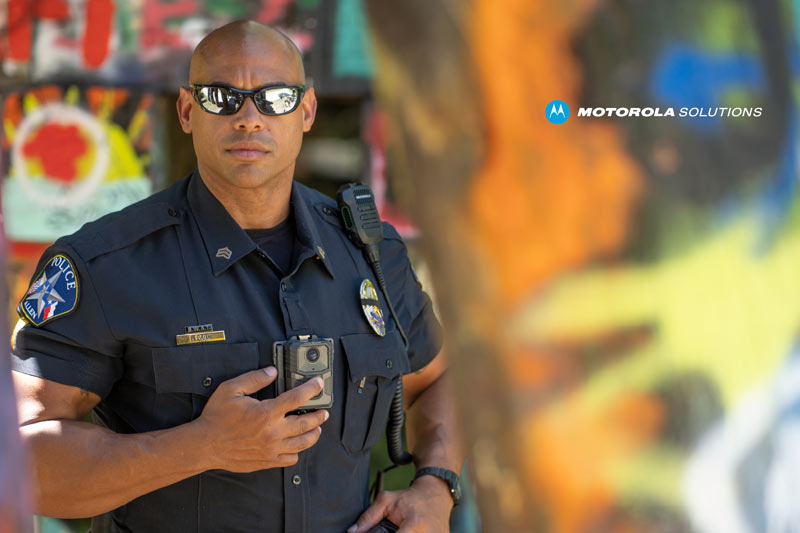Disaster Preparation: Why Your Plan Should Include a Two-Way Radio

 Unfortunately, many disasters are unavoidable. And year after year, the number of disasters in the United States seems to be steadily increasing. Moreover, nobody knows how to predict when a disaster will happen and where it will strike.
Unfortunately, many disasters are unavoidable. And year after year, the number of disasters in the United States seems to be steadily increasing. Moreover, nobody knows how to predict when a disaster will happen and where it will strike.
In disaster scenarios, it’s crucial to have a pre-planned response in place and reliable communication methods. We take for granted things that we have under normal circumstances that are frequently lost during a disaster, including communication systems. One of the most essential tools you can deploy during a disaster is a two-way radio system.
Some people may think that having their cell phone is adequate. After all, these devices provide near-constant connectivity. But, during disasters, our telecommunications infrastructure’s fragile nature is often revealed, and many impacted areas experience a total or near-total loss of cell phone connectivity. And when the loss of infrastructure is minimal, the network is often so jam-packed with users that those who need it most can’t connect.
Two-way radios excel where cell phones fail. They have dedicated bandwidth and a limited number of users. They also don’t require any built-in infrastructure, which makes their use impervious to most natural disasters. For first responders, these features are crucial in identifying and prioritizing where they are needed and what needs to be done to mitigate threats safely. Two-way radios have many advantages in these scenarios.
- Dedicated bandwidth: The dedicated bandwidth and the limited number of users means that congestion won’t be a problem. Those who need to communicate will have the ability to do so.
- GPS Tracking: Disaster responses can go downhill quickly, and maintaining communication under dire situations may not always be possible. However, many two-way radios have GPS tracking features, allowing emergency responders to identify other team members and provide assistance when vocal communication isn’t possible.
- Durable: Two-way radios are incredibly durable, and much more so than cell phones. They can often withstand even extreme conditions and still be functional.
- Group Conversations: Two-way radios allow for communication across multiple contact points, not just one or two. This feature means that if important messages need to get out to a broad group of people, it can be done easily and quickly.
- Comprehensive Connectivity: When disasters impact a large geographical area, two-way radios can still be a reliable communication method. Accessories, such as distributed antenna systems, bi-directional amplifiers, and repeaters, can increase their range up to 300 miles, ensuring that you can reach the full group no matter how scattered they are.
An excellent option for users looking for a durable and powerful two-way radio is the Motorola TLK 100, it includes features such as:
- Powerful and slim design
- Nationwide* Push-to-Talk
- WiFi Connectivity
- Location Tracking
- Long Lasting Battery
For a Next-Generation two-way radio, the Motorola XPR 7550e radio provides complete connectivity for any skilled professional. Some of it’s unique features include:
- Integrated WiFi and Bluetooth for easy software downloads and indoor location tracking capabilities.
- High-effciency battery lasting up to 29 hours.
- Garners an IP68 rating for better resistance to water and dust
- Text message capability
- Integrated GPS
- Rugged Design
- And More…..
To learn more about the XPR 7550e radio, click here.
Those are just a couple of examples of reliable two-way radios on the market. And two-way radios aren’t just for first responder communication during a disaster. They can serve many purposes for individuals. You can connect with family members and friends to determine their status, and you can call for emergency assistance if needed. Two-way radios can keep vital communication lines open to ensure that you and your family stay safe during a disaster.
But having a two-way radio is only half of the battle. It’s always a good idea to have a disaster plan. Elements of a good disaster plan often include the following items:
- A method for receiving emergency alerts and warnings
- A plan for shelter
- Identified evacuation routes
- A family or household communication plan
- An emergency preparedness kit
Related to the communication plan, it’s often a good idea to know all of your local and regional agencies that handle disaster management. You can locate this information beforehand by searching online and recording it in your overall disaster plan.
Another great idea to facilitate disaster communication is to create disaster response cards for family members and friends. These cards can identify where your family will meet in the event of a disaster, how to contact key agencies and individuals, a list of people to check-in with outside of the disaster area, and items needed when evacuating quickly.
Having a plan or something to reference quickly can often help organize your thoughts during a chaotic time and help you make better decisions under stressful circumstances. And a two-way radio can provide a stable and reliable means of communication when other methods fail. But be sure to pack extra batteries and familiarize yourself with disaster communication protocols in your area. These strategies ensure that you will be in an excellent position to communicate with loved ones and emergency responders when it’s most needed.
Communication is essential during a disaster. Nobody wants to be without a way to communicate when the unthinkable happens. Two-way radios are a reliable and cost-effective way to make sure you stay in contact with those you love, and they can ensure that your disaster response keeps your family as safe as possible.
